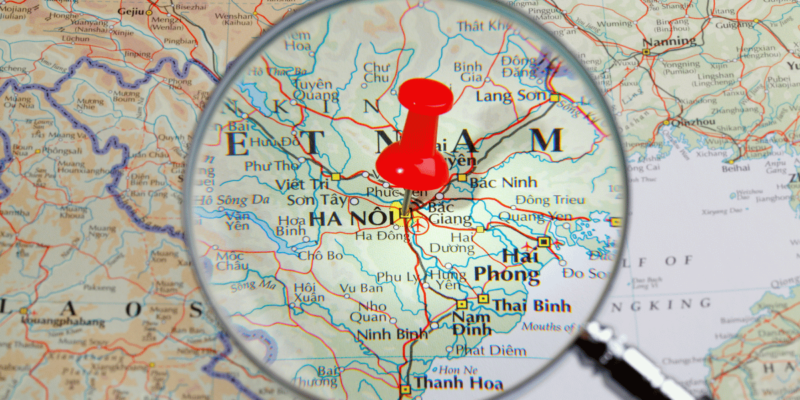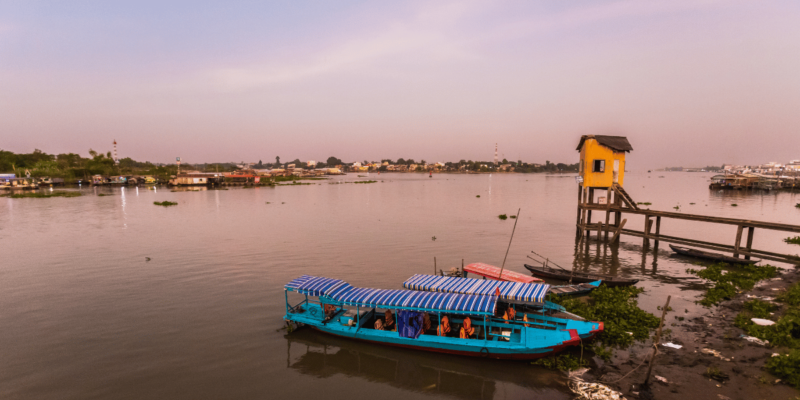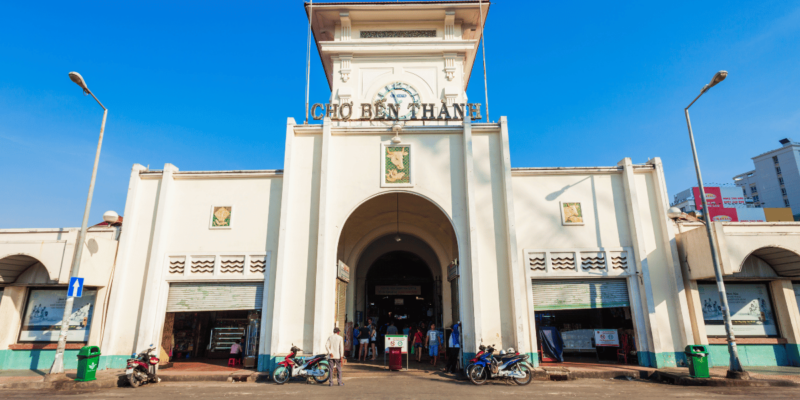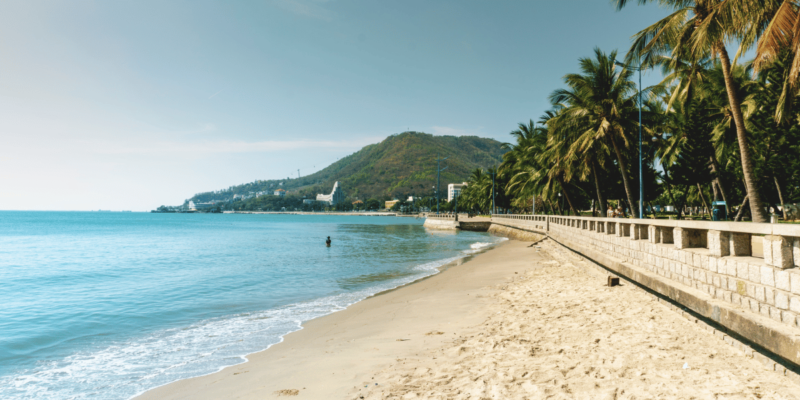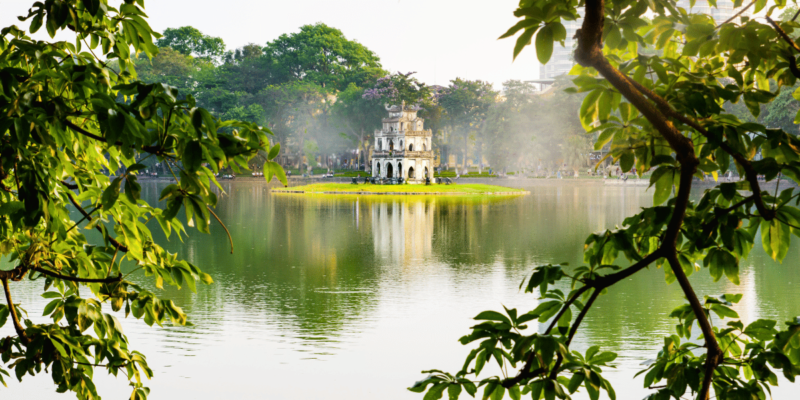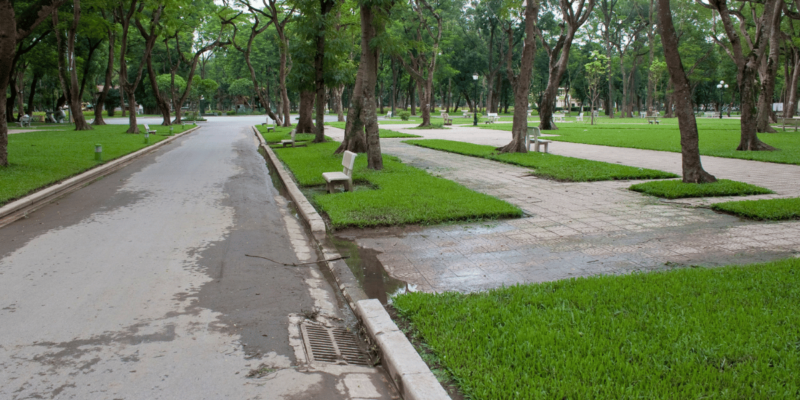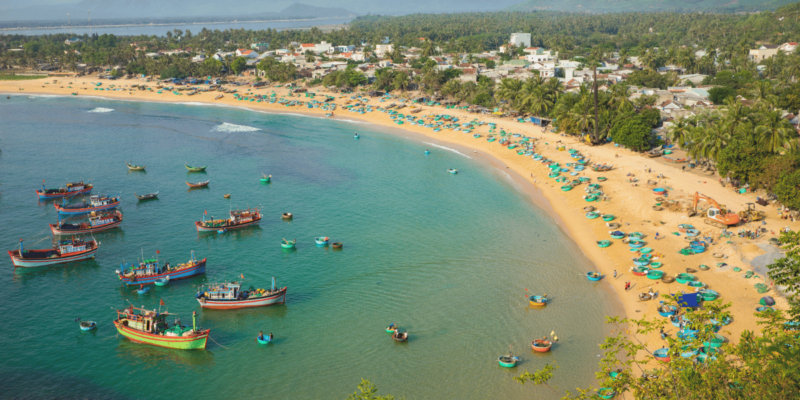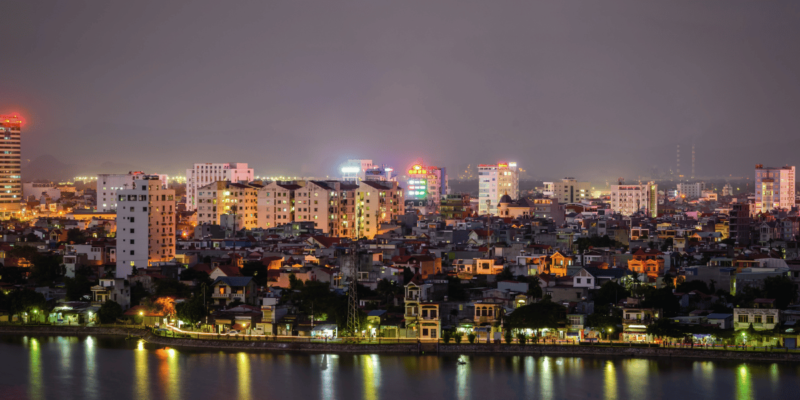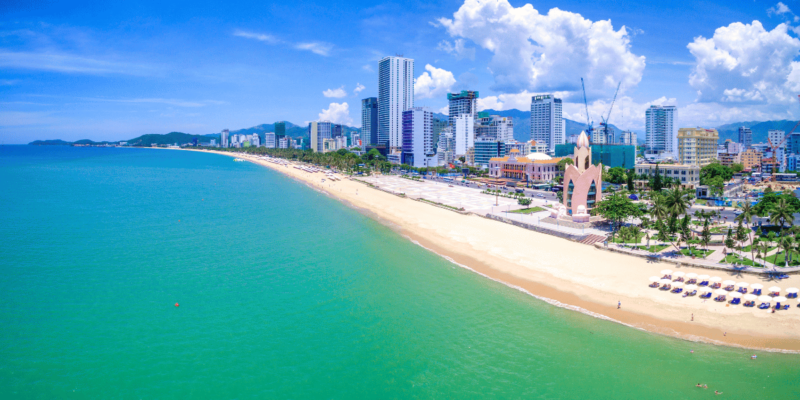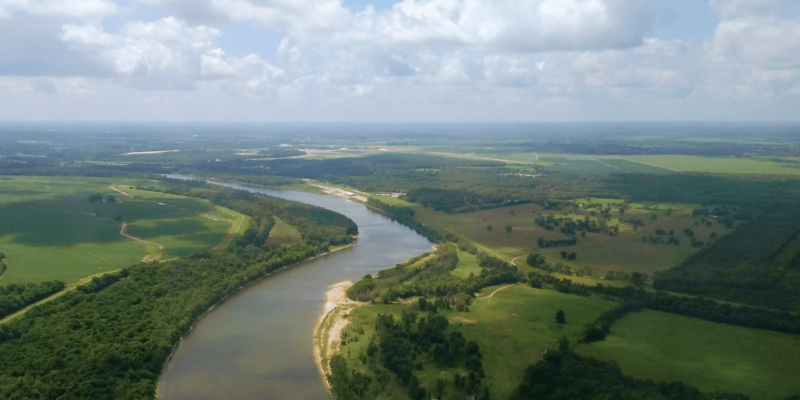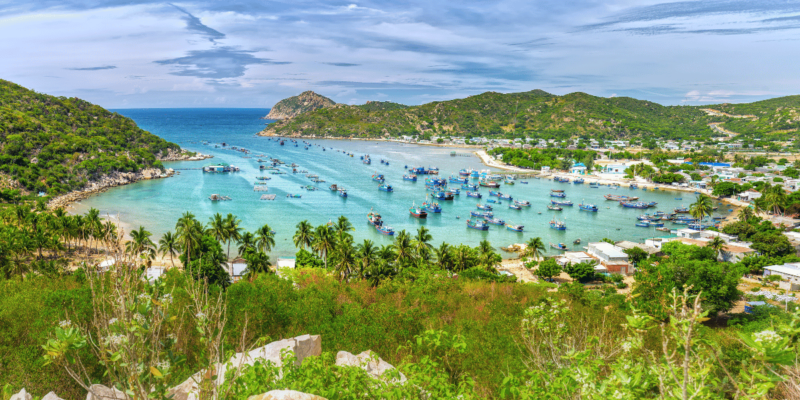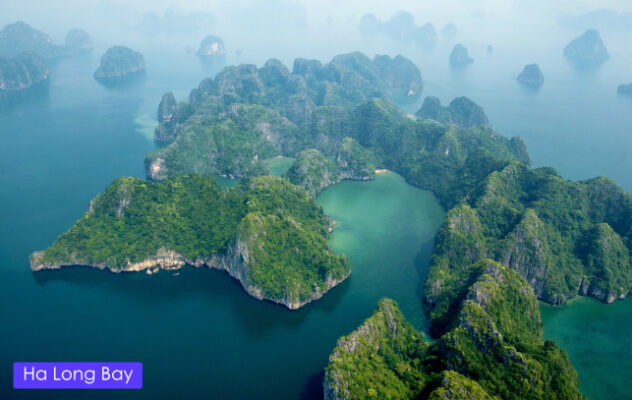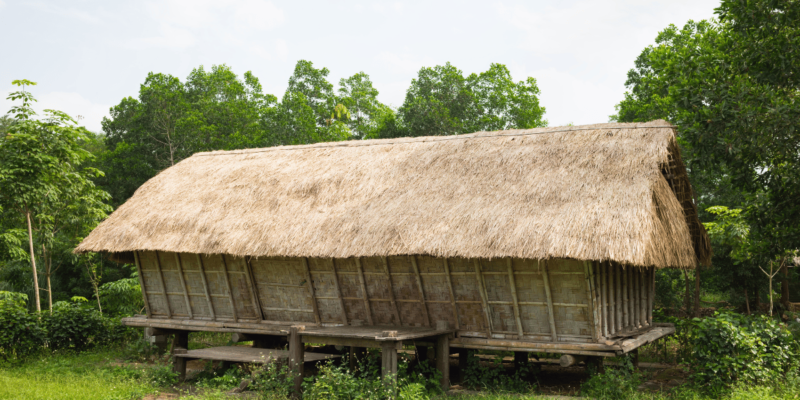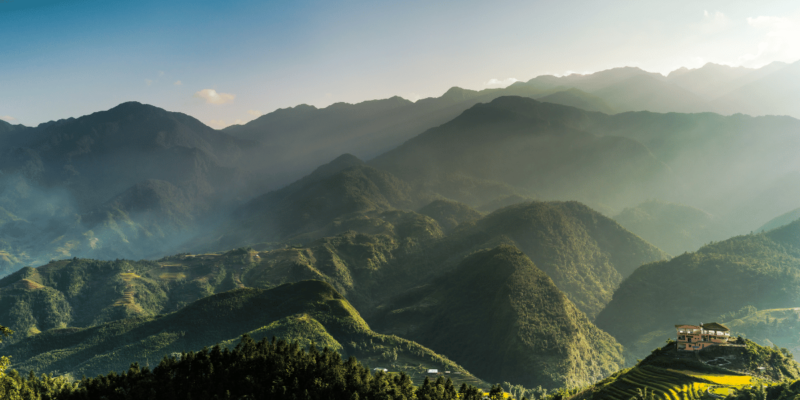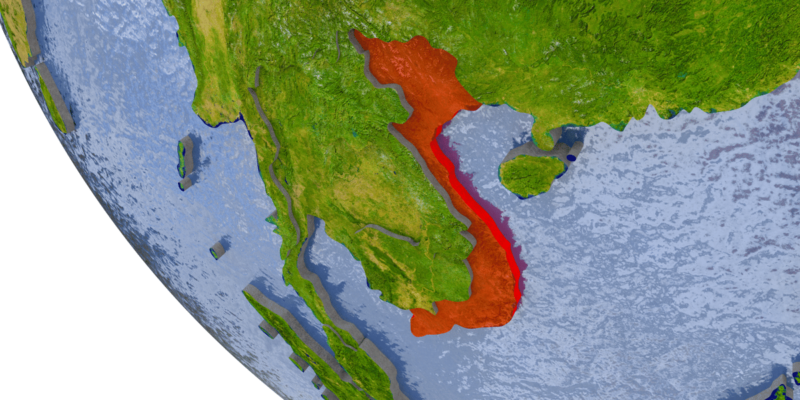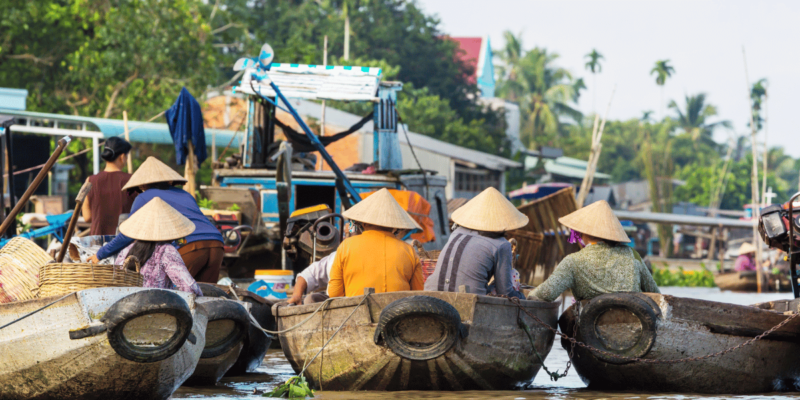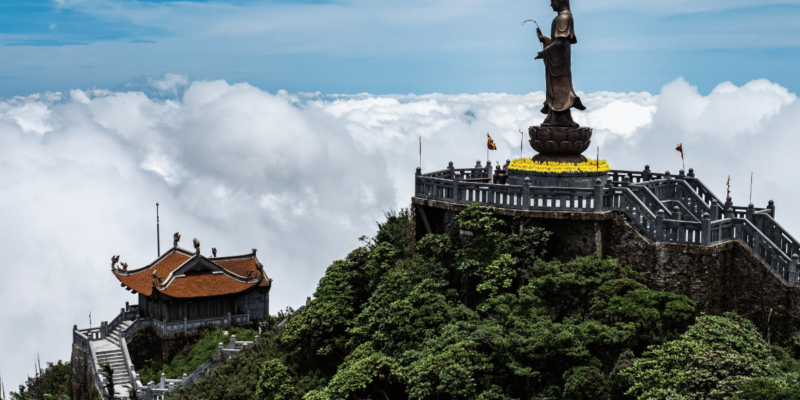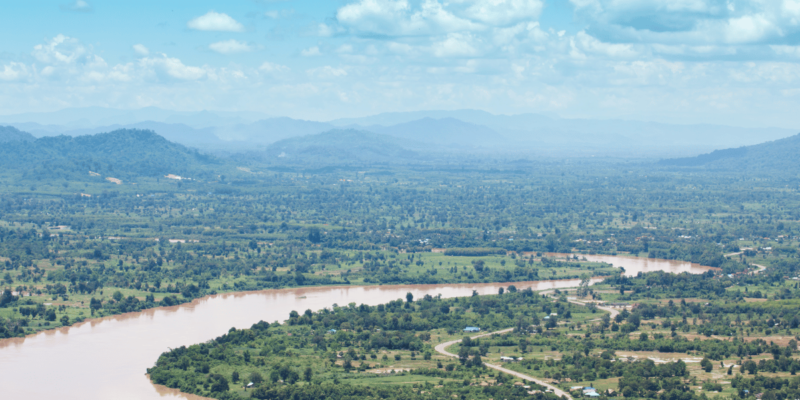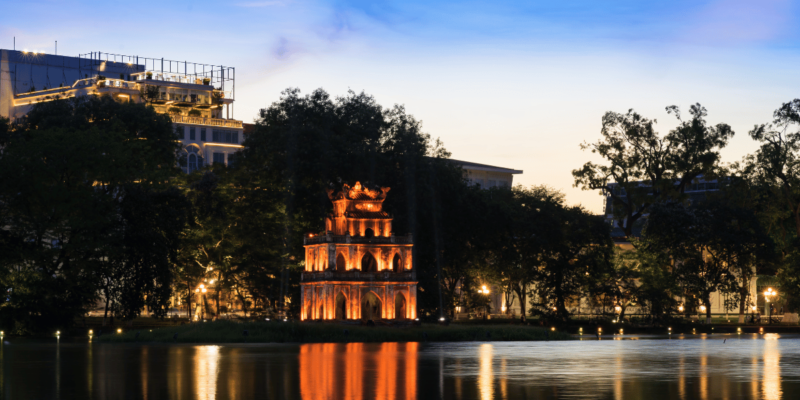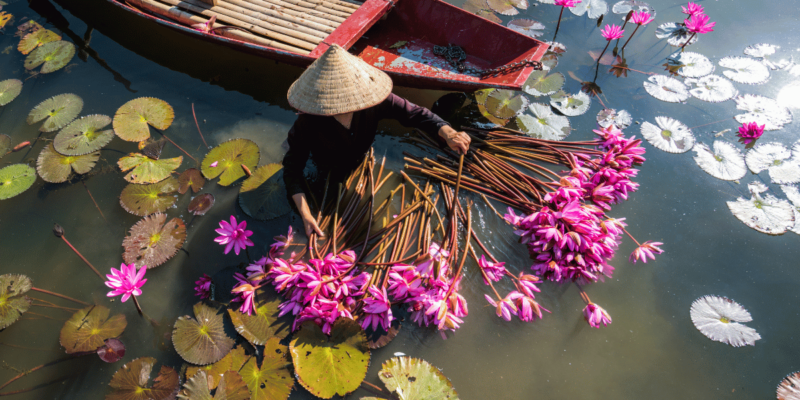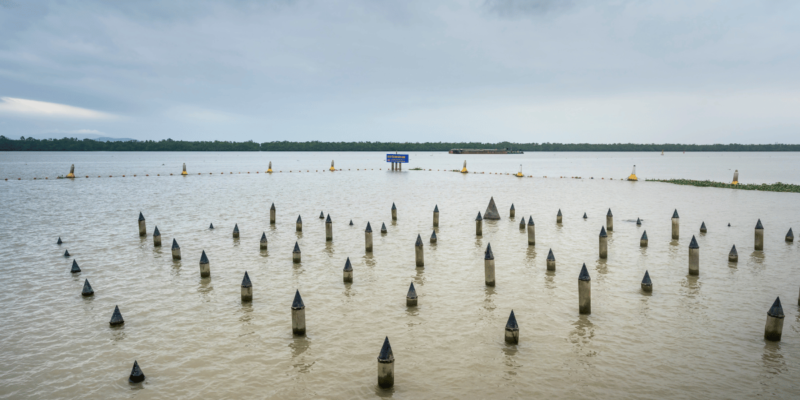Vietnam’s Beaches: A Detailed Exploration
Vietnam’s Coastal Allure: Vietnam boasts an extensive and captivating coastline stretching over 3,000 kilometers from the northern border with China to the southernmost tip of the country. This vast coastal expanse is dotted with a diverse array of landscapes, ranging from bustling beach towns like Da Nang and Nha Trang to secluded coves and pristine beaches that remain largely untouched by mass tourism. The country’s shoreline is not just a geographical feature but a vibrant tapestry of natural beauty, cultural richness, and historical depth, offering something for every type of traveler.
Beyond the Obvious: While popular destinations like Ha Long Bay and Phu Quoc Island often steal the spotlight, Vietnam’s coast is brimming with hidden gems waiting to be discovered. From the tranquil beaches of Quy Nhon to the rugged cliffs of Con Dao, and the serene beauty of Mui Ne’s sand dunes, these lesser-known spots provide unique and intimate experiences far from the crowded tourist hubs. These hidden treasures offer an opportunity to explore Vietnam’s coastal charm in a more authentic and serene setting.
Thematic Approach: This exploration of Vietnam’s coastline will cover a variety of themes to showcase the multifaceted appeal of the region. We will delve into the **historical significance** of coastal cities like Hoi An, known for its well-preserved ancient town and rich trading history. The **cultural richness** of fishing villages and the traditional practices that have shaped the local way of life for centuries will also be highlighted. For the adventurous, we will explore the **activities** available along the coast, from water sports and hiking trails to the vibrant nightlife in beach towns. Nature enthusiasts will appreciate the **natural wonders**, including the unique ecosystems of the Mekong Delta and the stunning marine life found in Vietnam’s coral reefs. By covering these themes, we aim to provide a comprehensive guide to experiencing the full spectrum of Vietnam’s coastal allure.
In summary, Vietnam’s coastline is a destination that promises diverse experiences, from historical explorations and cultural immersions to thrilling adventures and natural beauty. This guide will take you beyond the popular beaches and into the heart of Vietnam’s coastal gems, uncovering the stories and landscapes that make this region so captivating.
Northern Beaches
Ha Long Bay: Ha Long Bay is arguably the crown jewel of Vietnam’s northern coastline, celebrated for its breathtaking limestone karsts that rise dramatically from emerald green waters. This UNESCO World Heritage site offers a landscape that feels almost otherworldly, with thousands of limestone islands and islets scattered across the bay. Visitors can embark on various cruises, ranging from luxurious overnight stays to day trips, which provide a comprehensive exploration of the bay’s hidden caves, floating villages, and secluded beaches. Kayaking through the tranquil waters allows for a more intimate experience, letting you paddle close to the towering karsts and explore hidden lagoons. Island hopping is another popular activity, with stops at islands like Ti Top and Soi Sim, where visitors can enjoy swimming, hiking, and panoramic views.
Cat Ba Island: Just south of Ha Long Bay, Cat Ba Island offers a delightful mix of natural beauty and outdoor adventure. The island is the largest in the Cat Ba Archipelago and is known for its pristine beaches, rugged cliffs, and lush greenery. Cat Co beaches, located near the town center, are popular for their clean sands and clear waters, perfect for a relaxing day by the sea. For those seeking adventure, Cat Ba National Park offers numerous hiking trails that wind through dense forests and lead to stunning viewpoints. The park is home to diverse wildlife, including the endangered Cat Ba langur. Lan Ha Bay, adjacent to Cat Ba, is often considered a quieter alternative to Ha Long Bay, with equally stunning scenery but fewer tourists. Here, visitors can kayak, rock climb, and explore the bay’s numerous limestone islands and hidden beaches.
Other Northern Gems: Beyond the famous Ha Long Bay and Cat Ba Island, northern Vietnam boasts several less-visited coastal treasures that offer serene and unspoiled beauty. **Bai Tu Long Bay** is a quieter extension of Ha Long Bay, known for its tranquil waters, fewer tourists, and pristine beaches. This area provides a more secluded experience with opportunities for kayaking, swimming, and exploring limestone caves. Quan Lan Island in Bai Tu Long Bay is a hidden gem with long stretches of white sandy beaches, clear waters, and a peaceful atmosphere. The island is perfect for those seeking solitude and natural beauty. **Co To Island**, located further to the east, is another northern jewel known for its stunning beaches, crystal-clear waters, and vibrant marine life. Co To offers a range of activities, including swimming, snorkeling, and exploring the island’s rugged coastline and lush interiors.
In summary, northern Vietnam’s beaches offer a diverse range of experiences, from the iconic and bustling Ha Long Bay to the tranquil and less-trodden paths of Bai Tu Long Bay, Quan Lan Island, and Co To Island. Whether you are seeking adventure, relaxation, or a deeper connection with nature, these northern coastal destinations provide a perfect escape into some of Vietnam’s most stunning natural landscapes.
Central Beaches
Da Nang: Da Nang is a bustling coastal city that boasts some of Vietnam’s most beautiful beaches. My Khe Beach, often referred to as one of the most stunning beaches in the world, features a long stretch of golden sand and clear, calm waters ideal for swimming and water sports. Nearby, Non Nuoc Beach offers a quieter alternative, known for its soft white sand and gentle waves, perfect for relaxing or taking a peaceful walk. Beyond the beaches, Da Nang is home to the Marble Mountains, a cluster of five marble and limestone hills that offer spectacular views, ancient caves, and Buddhist temples. These mountains add a touch of mysticism and adventure to any visit, making Da Nang a well-rounded destination for both relaxation and exploration.
Hoi An: Just a short drive from the ancient town of Hoi An, An Bang Beach is a serene retreat with a laid-back vibe. This beach is less crowded than the more commercialized spots, making it an ideal place to unwind. An Bang’s clear waters and soft sands provide a perfect setting for swimming, sunbathing, and enjoying the coastal scenery. The beach is lined with charming cafes and seafood restaurants where visitors can enjoy fresh, local cuisine. The proximity to Hoi An’s Ancient Town allows travelers to easily combine a beach getaway with a cultural exploration of the town’s historic architecture, lantern-lit streets, and vibrant markets, offering a unique blend of relaxation and history.
Nha Trang: Known for its vibrant atmosphere and bustling nightlife, Nha Trang is a popular beach destination that attracts tourists from around the world. The city’s main beach, Nha Trang Beach, stretches along the coastline and is dotted with palm trees, restaurants, and bars. Nha Trang is a hub for water sports, offering activities like scuba diving, snorkeling, and jet-skiing. The city is also a gateway to various island excursions, including trips to Hon Mun Island, known for its colorful coral reefs, and Vinpearl Land, a luxury resort and amusement park located on Hon Tre Island. These island excursions provide opportunities for adventure, relaxation, and enjoying the natural beauty of the region.
Quy Nhon: Emerging as a hidden gem on Vietnam’s central coast, Quy Nhon is gaining popularity for its pristine beaches and tranquil atmosphere. Qui Hoa Beach is a peaceful retreat known for its clear blue waters and long sandy shores, perfect for a quiet day by the sea. The area is also home to the historical Eo Gio cliffs, which offer stunning views of the coastline and rugged landscapes. Quy Nhon’s growing beach scene includes various other beautiful spots such as Ky Co Beach, which is accessible by boat and offers crystal-clear waters and white sandy beaches. The city’s blend of natural beauty and historical significance makes it a must-visit for those seeking an off-the-beaten-path coastal experience.
Central Coast Hidden Gems: In addition to the well-known beaches, Vietnam’s central coast is dotted with lesser-known but equally captivating coastal spots. Lang Co Beach, located near the Hai Van Pass, is a tranquil beach with soft sands and azure waters, perfect for a peaceful retreat. Cua Dai Beach, near Hoi An, offers a more secluded alternative to the bustling An Bang Beach, with its serene environment and beautiful views. The secluded coves around Hue provide idyllic spots for those seeking solitude and natural beauty, with their unspoiled landscapes and calm waters.
In summary, Vietnam’s central coast offers a diverse array of beach experiences, from the vibrant and bustling Nha Trang to the tranquil and emerging Quy Nhon. Whether you’re looking for adventure, relaxation, or a blend of both, the central beaches of Vietnam provide a perfect setting for an unforgettable coastal getaway.
Southern Beaches
Mui Ne: Mui Ne is a diverse and vibrant coastal destination known for its unique landscapes and active outdoor scene. The area is famous for its **red and white sand dunes**, which provide a striking contrast to the turquoise waters of the South China Sea. Visitors can explore the dunes by foot, ATV, or even try sandboarding down the slopes for an adrenaline rush. **Kiteboarding** is another popular activity in Mui Ne, thanks to the area’s strong winds and favorable conditions, attracting enthusiasts from around the world. The **fishing villages** along the coast offer a glimpse into the traditional life of local fishermen, with colorful boats and bustling markets. A visit to the **Fairy Stream** adds a touch of magic, as the shallow stream winds through a canyon of red and white sand, creating a picturesque and serene setting.
Phu Quoc Island: Phu Quoc, Vietnam’s largest island, is a tropical paradise boasting a variety of stunning beaches and luxury resorts. **Long Beach** is the most famous, offering a long stretch of golden sand, clear waters, and a lively atmosphere with numerous bars and restaurants. **Sao Beach** is renowned for its powdery white sand and crystal-clear waters, making it a favorite spot for swimming and sunbathing. **Starfish Beach, located in the north, is known for its calm waters and abundance of starfish, providing a unique and tranquil experience. Beyond the beaches, Phu Quoc’s **national park** offers opportunities for hiking and wildlife spotting, while the island’s luxury resorts provide world-class amenities and breathtaking ocean views.
Con Dao Islands: The Con Dao Islands are a remote and beautiful archipelago known for their pristine beaches, clear waters, and rich history. The islands’ **historical significance** is highlighted by the Con Dao Prison, which was used during the French colonial period and the Vietnam War to hold political prisoners. Today, it serves as a museum and a poignant reminder of the past. Con Dao’s commitment to **eco-tourism** ensures that its natural beauty is preserved, with initiatives focused on protecting marine life and promoting sustainable travel. Visitors can explore the islands’ rugged landscapes, dive in coral-rich waters, and enjoy the untouched beauty of secluded beaches.
Vung Tau: Located just a short drive from Ho Chi Minh City, Vung Tau is a popular beach destination for city dwellers seeking a quick escape. The city boasts a bustling beach scene, with Back Beach and Front Beach being the main attractions. Back Beach is known for its long sandy shore and lively atmosphere, while Front Beach offers a more relaxed vibe with its tree-lined promenade. Vung Tau is also rich in **historical sites**, such as the Vung Tau Lighthouse, which provides panoramic views of the city and the sea, and the Statue of Jesus Christ, one of the largest of its kind in Asia. These attractions, combined with its proximity to Ho Chi Minh City, make Vung Tau a convenient and enjoyable destination.
Southern Delights: Beyond these well-known spots, southern Vietnam offers numerous other coastal gems. Ho Tram and Ho Coc are known for their pristine beaches and clear waters, providing a peaceful retreat with luxury resorts and natural hot springs. The islands off the Mekong Delta, such as Nam Du and Hon Son, offer idyllic beaches and a glimpse into the region’s unique ecosystem and way of life.
In summary, southern Vietnam’s beaches provide a rich tapestry of experiences, from the diverse landscapes of Mui Ne and the tropical paradise of Phu Quoc to the historical significance of the Con Dao Islands and the convenient escape of Vung Tau. Whether you’re seeking adventure, relaxation, or cultural enrichment, the southern coast of Vietnam offers something for every traveler.
Beyond the Sand: Activities and Experiences
Water Sports: Vietnam’s extensive coastline offers an array of water sports for adventure enthusiasts. Surfing in Mui Ne is particularly popular, thanks to its consistent waves and strong winds. Diving and snorkeling are exceptional in areas like Phu Quoc and the Con Dao Islands, where vibrant coral reefs and diverse marine life create an underwater paradise. Kiteboarding is a major draw in Mui Ne, renowned for its ideal wind conditions. For a more leisurely experience, stand-up paddleboarding allows visitors to explore the calm waters of places like Nha Trang and Hoi An at their own pace.
Island Hopping: Vietnam’s coast is dotted with stunning islands perfect for island hopping adventures. Boat trips around Ha Long Bay and Lan Ha Bay provide opportunities for snorkeling, diving, and simply enjoying the breathtaking limestone karsts and hidden lagoons. In the south, Phu Quoc and the Con Dao archipelago offer day trips to uninhabited islands, where pristine beaches and crystal-clear waters await. These excursions often include snorkeling in coral gardens, exploring sea caves, and relaxing on secluded beaches, providing a mix of adventure and tranquility.
Cultural Immersion: To truly experience Vietnam’s coastal charm, cultural immersion is key. Visiting fishing villages like those in Mui Ne and Quy Nhon allows travelers to witness traditional fishing techniques and daily life by the sea. Exploring local markets in coastal towns, such as the night market in Phu Quoc, provides a taste of the vibrant local culture and an opportunity to purchase handmade crafts and fresh produce. Learning about traditional crafts, such as boat building in Hoi An or pottery in the Mekong Delta, offers insight into the region’s rich cultural heritage and artisanal skills passed down through generations.
Culinary Delights: Vietnam’s coastline is a haven for culinary delights, with an abundance of fresh seafood and regional specialties. Sampling dishes like grilled fish, shrimp, and squid at local markets and beachfront eateries is a must. Each coastal region boasts its own unique flavors and cooking styles, from the spicy seafood soups of central Vietnam to the sweet and savory grilled dishes of the south. Beachfront dining in places like Nha Trang and Phu Quoc offers the perfect setting to enjoy these culinary treats, with the sound of the waves and stunning ocean views enhancing the dining experience.
Nature Exploration: Beyond the beaches, Vietnam’s coast offers rich opportunities for nature exploration. Hiking through national parks like Phong Nha-Ke Bang and Cat Ba allows visitors to discover lush forests, towering karsts, and diverse wildlife. Kayaking through mangroves in areas like the Mekong Delta provides a peaceful way to explore the unique ecosystems and observe local flora and fauna up close. Visiting wildlife sanctuaries, such as the endangered primate species in Cat Tien National Park or the sea turtle conservation areas in the Con Dao Islands, highlights the region’s commitment to preserving its natural heritage.
In summary, Vietnam’s coastline is not just about relaxing on the sand; it’s a gateway to a myriad of activities and experiences that cater to all interests. From thrilling water sports and island hopping adventures to cultural immersions and culinary explorations, there is something for everyone. Nature lovers can hike, kayak, and visit wildlife sanctuaries, ensuring a rich and diverse travel experience that goes far beyond the beach.
Practical Information
Best Times to Visit: Vietnam’s coastal regions each have their ideal seasons based on weather patterns. The northern beaches, such as Ha Long Bay and Cat Ba Island, are best visited from October to April when the weather is cooler and drier. Central coastal destinations like Da Nang, Hoi An, and Nha Trang enjoy the best conditions from February to August, offering warm temperatures and clear skies. For southern beaches like Mui Ne, Phu Quoc Island, and the Con Dao Islands, the optimal time is from November to April, avoiding the rainy season and benefiting from sunny, dry weather.
Transportation: Getting to Vietnam’s beach destinations is relatively straightforward with various options available:
- Flights: Major cities like Da Nang, Nha Trang, and Phu Quoc have airports with frequent domestic and international flights. Vietnam Airlines, VietJet Air, and Bamboo Airways are popular carriers.
- Trains: The Reunification Express railway line connects Hanoi and Ho Chi Minh City with stops at key coastal cities like Da Nang and Nha Trang, offering a scenic and comfortable journey.
- Buses: Long-distance buses operate regularly between major cities and coastal towns, providing a budget-friendly option. Sleeper buses are particularly popular for overnight journeys.
- Ferries: For island destinations like Phu Quoc and the Con Dao Islands, ferries and speedboats are available from the mainland. Ferries depart from ports like Rach Gia and Ha Tien for Phu Quoc, and from Vung Tau or Soc Trang for the Con Dao Islands.
Accommodation: Vietnam’s coastal areas offer a wide range of accommodation options to suit different budgets and preferences:
- Budget-Friendly: Guesthouses and hostels are abundant in beach towns, offering affordable and basic accommodations. Areas like Mui Ne and Quy Nhon have numerous budget options close to the beach.
- Mid-Range: Boutique hotels and mid-range resorts provide more comfort and amenities at reasonable prices. Hoi An and Da Nang are known for their charming mid-range accommodations.
- Luxury Resorts: For those seeking luxury, Vietnam’s coastline boasts numerous high-end resorts with world-class facilities and private beach access. Phu Quoc and Nha Trang are particularly famous for their luxurious beachfront resorts.
Responsible Tourism: Practicing responsible tourism is essential to preserving Vietnam’s coastal beauty and supporting local communities. Here are some sustainable practices to consider:
- Minimize Plastic Use: Avoid single-use plastics by carrying a reusable water bottle, shopping bag, and utensils. Many coastal areas have initiatives to reduce plastic waste, so support businesses that adhere to these practices.
- Respect Local Communities: Be mindful of local customs and traditions, and show respect to residents. Engage with local cultures by purchasing handmade crafts and dining at locally owned restaurants, which supports the local economy.
- Eco-Friendly Activities: Choose eco-friendly tours and activities that prioritize environmental conservation. Participate in beach clean-ups or support organizations working to protect marine life and habitats.
- Conserve Resources: Be conscious of your water and energy use, particularly in areas where resources may be limited. Simple actions like taking shorter showers and turning off lights and air conditioning when not in use can make a significant difference.
In conclusion, planning a trip to Vietnam’s coastal regions involves considering the best times to visit, transportation options, and suitable accommodations. Embracing responsible tourism practices ensures that you contribute positively to the preservation of these beautiful destinations. Whether you’re exploring the bustling beach towns, serene islands, or hidden coves, being a conscientious traveler will enhance your experience and help maintain Vietnam’s coastal allure for future generations.
Conclusion
A Beach for Everyone: Vietnam’s coastline is a tapestry of incredible diversity, offering something for every type of traveler. Whether you seek the bustling vibrancy of beach towns like Da Nang and Nha Trang, the tranquil beauty of secluded spots like Bai Tu Long Bay and Con Dao Islands, or the cultural richness found in places like Hoi An and the fishing villages of Mui Ne, there’s a perfect beach destination waiting for you. Adventure enthusiasts can dive into thrilling water sports, history buffs can explore ancient Cham towers and historical sites, and nature lovers can immerse themselves in the pristine landscapes of national parks and marine reserves. From luxury resorts to budget-friendly guesthouses, Vietnam’s beaches cater to all preferences and budgets, ensuring a memorable experience for every visitor.
Invitation to Explore: We encourage you to venture beyond the well-known tourist spots and discover the hidden gems that Vietnam’s coastline has to offer. The lesser-trodden paths of Quy Nhon, the untouched beauty of the Mekong Delta islands, and the serene coves around Hue await those willing to explore off the beaten path. Each coastal destination presents a unique charm and an opportunity to create unforgettable memories. Embrace the diversity, engage with local cultures, and soak in the natural beauty that defines Vietnam’s beaches.
In summary, Vietnam’s beaches are a gateway to a multitude of experiences, each offering its own unique allure. Whether you’re drawn to the adventure, relaxation, culture, or nature, there’s a beach in Vietnam that promises to fulfill your travel dreams. So pack your bags, set your sights on Vietnam’s stunning coastline, and discover your own slice of paradise.
Let me know if you’d like any of these sections expanded or have other questions.

